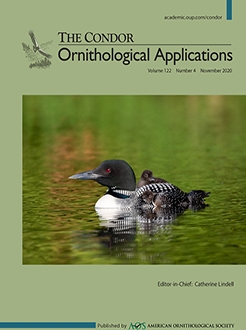Disturbance from human activity can cause reduced productivity of coastal birds that nest on sandy beaches. A common method to protect coastal birds from human disturbance is the use of signs and fencing to close off a section of beach used for breeding. This management action requires public compliance and might require enforcement, such as in the use of volunteer stewards stationed at protected colonies that provide education and enforcement. I assessed the effectiveness of active stewardship as a conservation measure to protect nesting Least Terns (Sternula antillarum) in coastal Mississippi by determining if colony-level productivity (fledglings produced per nest) was correlated with stewardship effort (hours that stewards protected each colony), the rate of disturbance from human and natural sources, and additional factors. Observers surveyed 24 Least Tern colonies in Harrison County, Mississippi, twice weekly during the 2017–2019 breeding seasons to record the number of nests present, the fate of marked nests, predator tracks within the colony, and the number of fledglings produced per colony. Concurrently, during their work shifts, stewards recorded all sources and durations of disturbance events that caused the terns to flush or respond with defense. Least Tern daily nest survival increased with colony size and stewardship effort, and was lower during intervals that included weekends and evidence of owl presence. Total productivity was negatively associated with avian predator disturbance rate and the total time adults spent flushed, but was not associated with stewardship effort. The results of this study demonstrate that active stewardship can have a positive effect on Least Tern productivity by increasing nest success, whereas current stewardship practices were not sufficient to increase chick survival, even in a system with a paucity of ground predators.
LAY SUMMARY
Birds that nest on public sandy beaches benefit from protective fencing and educational signs, but additional benefits may occur if volunteer stewards are stationed at the protected area.
I assessed whether the presence of stewards benefited nesting Least Terns by reducing human disturbance and increasing reproductive success at breeding colonies.
Audubon Mississippi staff monitored Least Tern colonies in coastal Mississippi from 2017 to 2019 while seasonal stewards observed the extent of disturbance at each colony.
Colonies with greater disturbance rates were less productive, and stewardship efforts benefited colonies by increasing nest hatch probability.
Posting stewards at breeding colonies is an effective management strategy for conserving Least Terns, although additional management actions are likely needed to increase chick survival.






